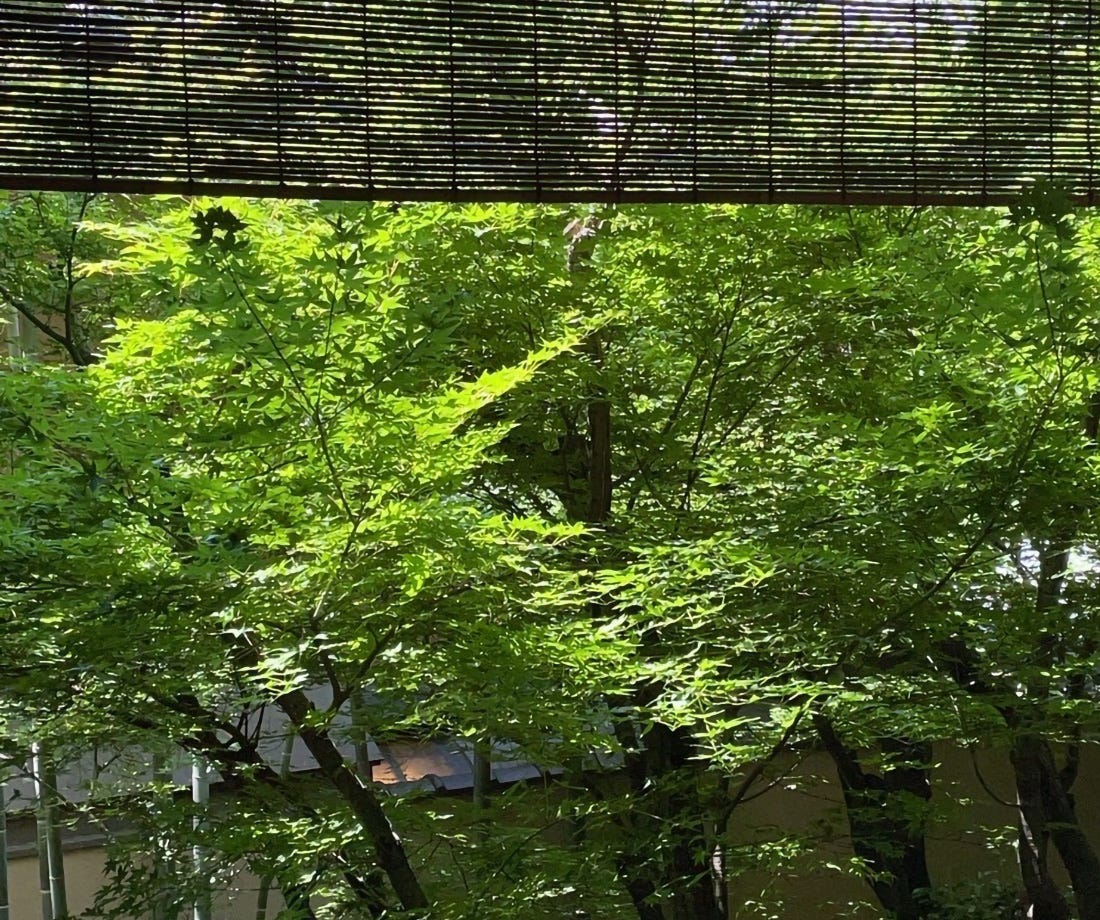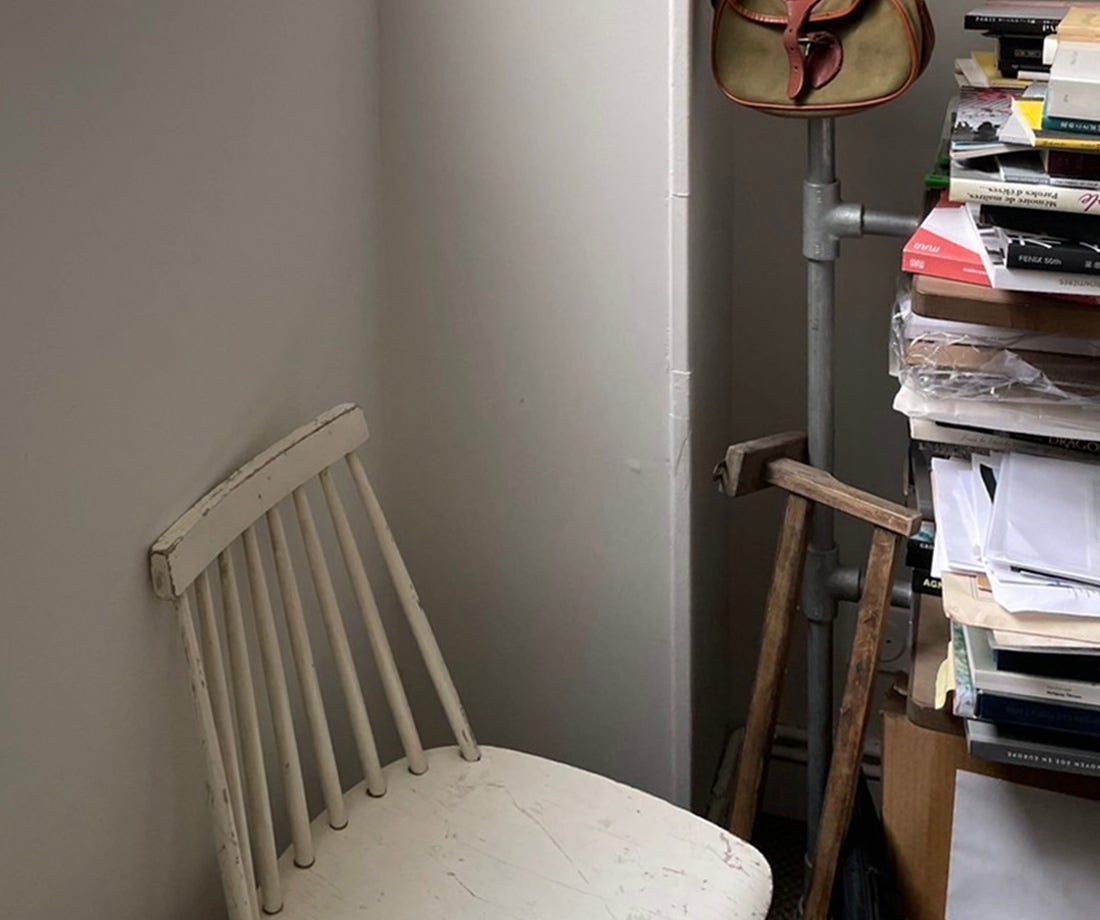
Introducing our new article series with writer Maha Harada. Dive deeper into the world of pearls through her essays and stories exclusive to Mikimoto.
Vol.5
A midsummer night's dream
The sake I sipped in the UK lulled me into a dreamlike world...
Part 1
I met Mrs. Kiyohashi at a small reception honoring the achievements of an old artist.
The celebration was held at a collector’s stylish mansion on the outskirts of London. Although small in scale, it was an elegant gathering with meticulous attention paid to every detail. The said artist was Japanese, but he moved to the UK over half a century ago and has been creating art in London ever since. He was a Royal Academician who had received the title of Sir from the Queen — basically a big name in the industry.
Most of the twenty-odd guests were British, with only a few being Japanese. Among them was Mrs. Kiyohashi.
Usually at events like this, conversation begins with guests introducing each other to their respective acquaintances but I didn’t really know anyone there. That was because I was invited personally by the artist after he stumbled across a short review of his recent solo exhibition that I’d written for a Japanese art magazine.
I taught Art History at a university in Japan, but I was in London at the time on a year-long sabbatical. My stay was nearly over, and I was due to fly back to Japan the following week.
After the toast, I just stood around with an empty champagne glass in my hand. I’ve always been socially awkward and never known how to navigate these kinds of situations. So despite knowing it would be the epitome of bad manners, I pulled my phone out of the inner pocket of my linen jacket and checked my social media. There was a new message from my wife in Japan who was awaiting my return.
Before you come home, please visit the National Gallery and buy me a calendar for next year. Don’t forget.
I let out a wry smile. It was just the start of July. They were getting way ahead of themselves. I mean both my wife and the National Gallery.
My thoughts came to a halt when a waiter bearing a silver tray of shot glasses glided over to me, offering a drink. “Thank you,” I took a shot glass half filled with a clear liquid, assuming it was gin or rum, and downed the beverage in one gulp. It caught me completely off guard.
A rich, delicate sweetness blossomed in my mouth and flowed gently down my throat. What I just drank was sake.
It gave me the feeling of an unexpected reunion with an old friend. I signaled the waiter to come back and grabbed another shot. This time, instead of finishing the drink in one go, I took a small sip. It was so good. Cool and clear like pure spring water.
“How is the taste?” Someone suddenly asked me in Japanese, so I turned toward the voice.
A Japanese woman stood there. She had chestnut brown, wavy hair just reaching her shoulders and a pair of large, luminous pearl earrings framing her face. Her burgundy summer dress beautifully complemented her poise while her double-strand pearl necklace elevated her sophistication. With a smile on her lips the same shade as the dress, she asked me another question: “Did you enjoy that sake?”
I was caught off guard again but responded, “Yes, a lot,” and returned a smile. “I never expected to come across such good sake in the UK... It was surprisingly delicious.”
I lifted my shot glass a little, asking, “Have you already tried it?” Her smile broadened at my question. “Yes, I’ve had it many times.”
That was how I met Mrs. Kiyohashi. She told me that this exceptionally serene sake, reminiscent of sweet dew, was produced in a sake brewery that she established in East Cambridge.
The train departed from King’s Cross station and arrived at Cambridge station in just about an hour. Young people who looked like students all rushed off the train. I was now the only person left in the carriage.
More than 30 years ago, I studied at the university in this city just for a year as an exchange student. So when I saw the station sign “Cambridge” after all this time, I noticed a pang in my heart and felt sad watching it recede into the distance. I might never get off at this station in my life again. Sentimental thoughts suddenly welled up in me.
About 20 minutes later, the train arrived at Ely station. By the time I had passed through the ticket gates, my petty emotion was already gone. I hopped into a taxi and gave the driver the address that Mrs. Kiyohashi had texted me.
“You from Japan?” The driver asked in a friendly tone via his rear-view mirror as soon as we started moving. “Yes,” I responded. “Have you come to drink sake? At the brewery.” “Uh, yes. That’s right.” I gathered that the place was well-known around here.
“I heard it’s delicious. Japan’s famous sake.” “Yes, it’s delicious. Especially the one at the place we’re heading to.” “Yeah, I bet. If it’s brewed here, it’s bound to taste good.”
The taxi took me to an estate that had an unbelievably large garden. No, it was more than a garden. It was like a garden park but even bigger. There was no livestock, but it was so huge I wanted to call it a pasture.
The brick house was built in classic 17th century Jacobean style. The front door opened, and Mrs. Kiyohashi appeared on the porch.
“Welcome,” she greeted me with a smile. She was wearing a relaxed white cotton tunic with white trousers. As before, a pearl necklace was draped around her neck.
“You must be busy preparing for your return, but it’s lovely to have you here.” “Thank you for inviting me,” I said. “I got a bit too excited and ended up coming, but you must be busy too. I hope I’m not causing you too much trouble?” “Not at all. You’re very welcome here. It’s particularly nice to have guests for the sake.”
As soon as I put down my belongings, she offered to give me a tour around the garden. I’d assumed we would be going straight to the brewery, so her suggestion came as a delightful surprise.
Sake is traditionally a sacred drink that connects us to the gods. How wonderfully apt that my tasting would be preceded with an opportunity to admire the garden and find inner peace. Even more so in a British countryside teeming with natural beauty.
Maha HARADA
b. 1962 Tokyo, Japan
Based between Tokyo, Paris, Kyoto, and Nagano, Maha Harada is a creative visionary and exceptional storyteller who has produced world-class, category-defying writing.
Harada is one of the founding curators of Tokyo’s acclaimed Mori Art Museum; when it was established, she was sent to represent the Museum as a project researcher at its principal cultural partner, The Museum of Modern Art, New York. It is for this reason that Maha Harada is renowned as Japan’s leading creator of art novels and art entertainment.
She is among Japan’s most talked-about writers and creatives, and her extraordinary experiences give her an unparalleled ability to blend art and literature. Harada’s art novels journey into the past to breathe fresh life into some of the world’s most beloved artists, who still enchant countless people today. These stories transcend time and generation crossing the boundaries of nation and region. At the same time, they are rooted in the experiences of a woman born and raised in Japan.



 Back
Back 



 Back to "Everything in harmony"
Back to "Everything in harmony"